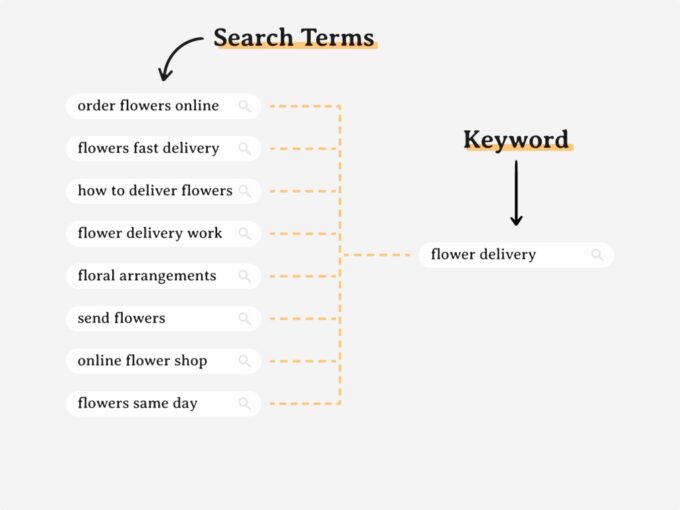Pinterest is more than just a visual platform; it’s a powerful search engine for discovery. With the right optimization techniques, you can use Pinterest to drive significant traffic to your website or blog. Here’s a step-by-step guide to optimizing your Pinterest pins for maximum reach and engagement.

1. Create High-Quality, Eye-Catching Pins
High-quality visuals are crucial to grabbing attention on Pinterest, where the competition for clicks is fierce. Here’s how to make your pins stand out:
- Use Bright, High-Resolution Images: Pinterest users tend to be attracted to bright, vibrant images, so opt for colors that pop. Warm colors, like reds and oranges, generally perform well.
- Vertical Format is Key: Pinterest prefers vertical images with a 2:3 ratio, such as 1000 x 1500 pixels. This size allows for more visibility and ensures your pins don’t get cut off in users’ feeds.
- Maintain Brand Consistency: Use consistent colors, fonts, and logos to establish a recognizable brand identity. This helps build trust with viewers and makes your content instantly recognizable.
2. Write Compelling, Keyword-Rich Descriptions
Descriptions are an essential part of your Pinterest strategy, as they help your pins show up in relevant search results.
- Include Keywords Naturally: Think of Pinterest like a search engine. Use keywords that users might search for related to your content. For example, if you’re posting about a recipe, include words like “easy dinner ideas” or “quick meals.”
- Use Hashtags Strategically: Pinterest allows hashtags in pin descriptions, so include a few relevant hashtags, such as #DIYHomeDecor or #HealthyRecipes, to broaden your reach.
- Write for Engagement: Craft descriptions that entice users to click by including phrases like “Find out more” or “Get started with this guide.” The goal is to create curiosity and increase clicks.
3. Leverage Text Overlays on Images
Adding text overlays to your pins can significantly improve engagement by making it clear what your pin is about at a glance.
- Use Bold, Readable Fonts: Choose fonts that are easy to read and bold enough to stand out on a mobile screen. Contrast the text color with the background for better visibility.
- Keep Text Short and Relevant: Summarize the pin’s main idea in a few words. For example, instead of “Healthy Meal Ideas for Busy Moms,” try “10 Quick & Healthy Meals.”
- Align with Search Intent: Your text overlay should match the topic users are searching for, like “DIY Home Decor on a Budget” if targeting budget-conscious users.
4. Optimize Pin Titles
Titles, like descriptions, are crucial for SEO on Pinterest. They provide another chance to include keywords that increase your pin’s chances of being discovered.
- Keep Titles Short and Specific: Users are more likely to click on a title that gets straight to the point. Avoid overly long titles, and use keywords to improve searchability.
- Include a Call to Action: If appropriate, add a subtle call to action in the title, such as “10 Easy Recipes You’ll Love” or “DIY Decor for Beginners.”

5. Optimize Your Pinterest Profile and Boards
Your profile and boards are key components of your Pinterest presence. Optimizing these can make it easier for users to find your content.
- Use Relevant Keywords in Your Profile: Describe your niche and the type of content you offer using relevant keywords. For instance, “Healthy Recipes & Meal Planning” or “DIY Home Decor Tips.”
- Create Focused, Keyword-Rich Boards: Each board should focus on a specific theme and include keywords in the title and description. This helps Pinterest categorize your content, making it easier for users to discover.
- Pin to Multiple Relevant Boards: For each pin, save it to multiple related boards to increase its reach and visibility. Just make sure the boards are relevant to the content.
6. Take Advantage of Idea Pins
Idea Pins, Pinterest’s story-like feature, can increase engagement and help build a following. They allow users to share step-by-step guides, tutorials, and short lists.
- Create Step-by-Step Content: Use Idea Pins to create step-by-step guides or visual stories related to your niche. These are especially popular for recipes, DIY projects, and quick tips.
- Use Videos and Multiple Images: Idea Pins support videos and multiple images, so take advantage of these to make your content more dynamic and engaging.
- Provide Value: Focus on actionable and valuable content, as Idea Pins can’t be linked directly to your website. Instead, build brand recognition and authority, which can drive users to follow you and explore your other pins.
7. Pin Consistently and at Peak Times
Pinterest rewards consistency, so posting regularly can improve your chances of reaching a larger audience.
- Establish a Consistent Pinning Schedule: Aim to pin a few times a week to maintain a steady presence on the platform. Spacing out pins can help keep your content in front of users without overwhelming them.
- Pin at High-Engagement Times: Pinterest’s peak times are usually in the evening, especially on weekends. Use tools like Tailwind to schedule pins during these times to maximize engagement.
- Experiment with Frequency: Start by pinning daily or a few times per week, then adjust based on what generates the most engagement for your profile.
8. Optimize the Linked Landing Page
A well-optimized pin is only part of the equation; the page it links to must also offer a positive user experience.
- Ensure Relevance and Consistency: The content on your landing page should align with the pin description and title. If users click on a “DIY Decor Guide,” they should find the guide they’re expecting on your website.
- Add a Clear Call to Action: Once on your website, encourage users to take action, whether that’s reading a blog post, signing up for a newsletter, or purchasing a product.
- Optimize for Mobile and Speed: A mobile-friendly, fast-loading landing page improves user experience and prevents drop-offs. Pinterest users often browse on mobile, so a slow page may deter potential visitors.
9. Analyze Performance and Adjust Your Strategy
Pinterest Analytics can provide valuable insights into which pins drive the most traffic and engagement.
- Track Your Top-Performing Pins: Pay attention to which pins perform best, considering factors like style, description, and timing.
- Replicate What Works: Use the data to inform future pins, such as using similar keywords, descriptions, or styles for pins that have already proven effective.
- Stay Up-to-Date on Trends: Seasonal or trending content often performs well, so stay aware of popular themes in your niche to keep your pins relevant and timely.
By following these Pinterest optimization strategies, you can drive more traffic to your website, build a following, and create long-term engagement. Pinterest rewards well-optimized, visually appealing, and relevant content, so invest the time to make each pin count. With consistent effort, you can turn Pinterest into a valuable traffic source for your brand.











Leave a comment